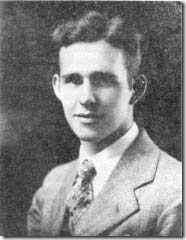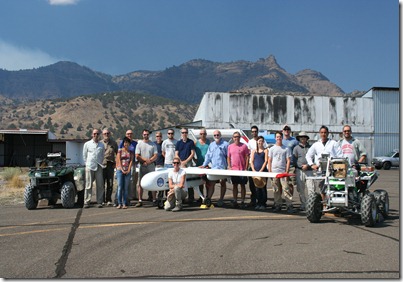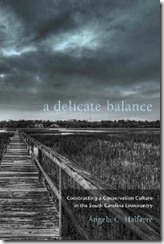This site will be active soon
ECOS students win a national video contest!
The GLP Films’ Student Film Project is an annual contest that invites students to pick up a camera and create their own short films documenting sustainability-related stories in their school, home, or community. This year three EES / SUS students (Tim Sharp, Josie Newton, and Melanie Brown) in the Engaged Living ECOS program submitted a film “Gardening for Good” that they made as part of their FYS 1126 course (Sustainability) with Dr. Dripps. Their film won the college division! Congrats to these three – the film can viewed here or by clicking on the image below.
WINNERS
College – "Gardening for Good" Josie Newton, Tim Sharp, Melanie Brown, Furman University
https://vimeo.com/album/2919991/video/98380526
Other winners are:
Middle School – "Parras Grades of Green" Lilly Sprangler, Parras Middle School
https://vimeo.com/album/2919991/video/98384804
High School – "ECO2School" Samantha Perry and Jasmine Jolly, Maria Carrillo High School
“Teaching and learning sustainability”- a new paper published by Dr. Wes Dripps
Congratulations to Dr. Dripps for publishing the paper “Teaching and learning sustainability: An assessment of the curriculum content and structure of sustainability degree programs in higher education” in the Journal of Sustainability Science.
GIS in community problem solving!
Using GIS and Drones, Furman University students are studying the existing condition of street lighting in neighborhoods with the goal of making these areas safe and reduce incidences of crime in Greenville communities. As part of their GIS class project taught by Mike Winiski of Center for Teaching and Learning, they have studied Po Mill and New Washington Heights communities in Greenville to field map street light conditions and intensity and now using drone technology for developing a model of street lighting reach so that this can be scaled to a larger area of study.
Students and faculty have worked with the community members to identify the problem and to address the problem through some kind of community based funding model, so the decision about the location of new streetlights is based not only on solid data, but more importantly the voice of the entire community. For more information, please check out: http://edge.furman.edu/lights-on-for-safety.html
Video compiled and edited by Taylor de Lench, Furman University
Dr. Anderson receives Fulbright Scholarship to teach in Croatia
By Tina Underwood
 Professor Brannon Andersen, Ph.D., has been awarded a Fulbright Scholarship for teaching and research at the University of Zadar in Croatia during the 2014-15 academic year.
Professor Brannon Andersen, Ph.D., has been awarded a Fulbright Scholarship for teaching and research at the University of Zadar in Croatia during the 2014-15 academic year.
Through the grant, Dr. Andersen will be affiliated with the Department of Ecology, Agronomy and Aquaculture, as well as the Department of Geography, at the University of Zadar. His teaching focus at the university will be increasing capacity in the areas of biogeochemistry and sustainability science. His research will be centered on methods of increasing organic carbon in degraded agricultural soils.
“With Furman as the only undergraduate liberal arts institution with a sustainability science major, we have much to offer other universities that are looking to strengthen their sustainability programs,” Andersen said. “My time in Croatia will allow me to contribute not only to a growing academic program at University of Zadar, but to also exchange ideas about how agroecological methods of farming could restore soil heath, sequester carbon dioxide from the atmosphere, provide a sustainable source of food, and improve water quality.”
Andersen said Croatia faces similar problems with degradation of agricultural soils as South Carolina, and his work in Croatia will help determine if agroecological methods being used by local farmers in the Upstate, such as intensive grazing, are transferable to Croatia.
The Fulbright Program, established in 1946, is the flagship international educational exchange program sponsored by the U.S. government and is designed to increase mutual understanding between the people of the United States and the people of other countries. Recipients of Fulbright grants are selected on the basis of academic or professional achievement, as well as demonstrated leadership potential in their fields. The program operates in more than 155 countries worldwide.
Andersen joined the Furman faculty in 1994 after completing his Ph.D. at Syracuse University. He is trained in geology, but has transitioned into an environmental scientist with a focus on biogeochemistry and sustainability science.
Andersen has been chair of the Earth and Environmental Sciences department since 2009, was named the Henry and Ellen Townes Professor of Earth and Environmental Sciences (1998-2000), the Association of Furman Students Faculty Member of the Year (2003-2004), a South Carolina Independent Universities and Colleges Teacher of Excellence (2008), and a Howard Hughes Medical Institute Distinguished Undergraduate Research Mentor (2010).
Andersen is also an adjunct professor in the School of the Environment at Clemson University and an associate editor for the journal Environmental Geosciences.
– See more at: http://newspress.furman.edu/2014/04/andersen-receives-fulbright-scholarship/#sthash.DhJJKVsI.dpuf
George Flowers ’13 digs in to sustainable farming around the world
by Erikah Haavie, Contributing Writer

It didn’t take George Flowers long to realize his connection to the outdoors.
Some of his favorite memories of his middle school years were the weekends he spent fishing and clearing trails on a piece of family land in Alabama first owned by his great-grandfather.
Since then, his love has only grown. Flowers, who is also majoring in political science, is part of the first class at Furman who will graduate with bachelors’ degrees in sustainability science in May 2013. The summer before his junior year, he cultivated an acre of fruits and vegetables on his family land, selling half the produce to a local organic market and donating the other half to local homeless shelters. This summer, he spent time working on organic farms in four different countries: Italy, Switzerland, Denmark, and Tanzania.
"I gave myself to wherever I was," said Flowers, a Columbus, Ga. native who has also been active with the Furman Farm. "You directly see the results of your work."
Flowers’s summer adventure across two continents began with a May Experience course led by professors Bill Allen and Ron Friis, which focused on the slow food movement and included a stay on a sustainably-operated family farm in Sora, Italy. He then went on his own to farms in Fuglebjerg, Denmark, and Eisten, Switzerland, where he worked as a volunteer for the World-Wide Opportunities for Organic Farming Initiative.
Mafia Island off the coast of Tanzania was his last stop, where he spent about six weeks working in a remote village without running water. While the island, home to about 40,000 residents, sees only a few thousand visitors a year, it is known for its rich marine biodiversity.
While there, he communicated using phrases in Kiswahili, the country’s national language, and lived with a local family eating a diet of fried plantains, potatoes, fish, rice, boiled squid, and fresh mango juice.
His work typically began at 8 a.m., and could include anything from tilling cassava with a hoe to mending fishing nets. He learned effective ways to use a machete to cut down shrubbery and became more adept at climbing 50-foot tall trees to harvest coconuts. At the end of the day, he washed, not in a shower, but using a bucket.
"George showed a hard work ethic, deep respect for those he was living with and conducting research, and the ability to adapt to challenging environments," said Betsy Beymer-Farris, an assistant professor of sustainability science at Furman who has conducted research in Tanzania for more than twelve years and supervised Flowers’s research over the summer.
Flowers is compiling the results of his research in his senior thesis, which will compare small-scale sustainable farming practices in the United States and the four other countries he visited. His experience was supported by a Furman Advantage fellowship.
After graduation, Flowers plans to continue onto graduate school to study either ecology or geography, while continuing to dabble in his studies of sustainable agriculture.
"I always want to have a farm going wherever I am," Flowers said.
Photos by Megan Will
Making Sense of Hurricane Sandy?
Image from NASA

There is no better time for this. We are just starting the topic of hurricanes and severe weather in our “EES 113: Natural Hazards and Natural Disasters” class and we got a perfect storm for case study. Following are some resources that has been compiled to help understand why hurricane Sandy is so powerful and so feared.
- How do hurricanes form? – a nice BBC video clip that explains the basics
- Hurricane Sandy from Space – Incredible time-series animations of evolution of Sandy from Wired Science
- Full moon and Frankenstorm – how moon affects storm surge?
- Live – Hurricane track with various hazards marked map
- Why Sandy is so dangerous (nice video that goes over good details)
- Havoc as storms come ashore – NYT article with lots of photos
- Map showing wind speeds along Sandy’s path
- NPR News – All things considered
- Science of Sandy (NPR piece, not really science that you may be looking for)
- Hurricane Sandy and Climate Change – nice article from Huffington Post
- Hurricane Sandy swallows presidential campaign
- Sandy’s impact on election is uncertain
- Obama and Romney respond to Sandy
- New York State – a declared major disaster area
Feel free to contact Dr. Suresh Muthukrishnan with any questions or comments.
75th Anniversary Meeting of the Carolina Geological Society held in Greenville
 Photo to the left: Wilbur C. Holland circa 1930, founding father of the Carolina Geological Society.
Photo to the left: Wilbur C. Holland circa 1930, founding father of the Carolina Geological Society.
It was 75 years ago, in 1937, that Wilbur C. Holland, then Geology Professor at Furman University, founded the Carolina Geological Society (CGS) to create an active community of geologists in the area. The main purpose of the society is to promote the Geosciences, encourage the study of Earth Science, promote spirit of friendship and cooperation, and encourage research and publication. At the time of its founding, Holland envisioned a full day meeting with presentations of papers in a morning session and field trip in the afternoon. Currently, the meeting is held over three days, starting with a reception on the first evening, followed by a day and a half of field trips to various localities.
As a tribute to the 75th anniversary of CGS, Furman Earth and Environmental Sciences professors Dr. Bill Ranson, Dr. Jack Garihan, and Dr. Suresh Muthukrishnan conducted the meeting in Greenville. Field trips showcased the geology, geomorphology and landslide hazards in Upstate of South Carolina. A special celebration was held at the Table Rock State Park Pavilion on Saturday evening.
Students Brooks Bailey, Claire Campbell, Stephen Campbell, Katharine Compton, Elizabeth Johnston, and Ryan Richardson assisted the leaders during the planning stages and during the field trips, ensuring the safety of participants along congested roadways. Apart from these student assistants, 15 other Furman students attended the conference. A total of 156 total participants were present making it a successful event. The edited volume of the field guide in electronic format will be available from CGS website.
The department wishes to thank all the student assistants and especially Ms. Nina Anthony for their tireless efforts and help over the last several months. We also thank our recent graduate Jay Bridgeman (‘12) for leading a part of the field trip to the Salem ultramafic body on Saturday.
Jay Bridgeman’s experience with USGS exploring Mineral and Geothermal Potential
 Jay Bridgeman, 2012 graduate from EES, spent the summer working on an internship with the US Geological Survey western region branch in Menlo Park, CA. He worked with the geophysics unit investigating mineral and geothermal potential in several locations in Nevada, California and Oregon. Jay worked with several geophysical techniques including gravity, magnetic, paleomagnetic and electrical methods to image structures in the subsurface.
Jay Bridgeman, 2012 graduate from EES, spent the summer working on an internship with the US Geological Survey western region branch in Menlo Park, CA. He worked with the geophysics unit investigating mineral and geothermal potential in several locations in Nevada, California and Oregon. Jay worked with several geophysical techniques including gravity, magnetic, paleomagnetic and electrical methods to image structures in the subsurface.
He says, “we would spend between 10-15 days in the field locations doing long days of field work, collection and processing of geophysical data, and physical rock property measurements. We even got to do a joint venture with NASA flying a magnetic survey with an unmanned aerial vehicle, which was featured in a Scientific American expedition blog. I really enjoyed my internship with the USGS, and felt that Furman had definitely prepared me and given me the skills necessary to excel.”
Jay is currently working with Unimin Corporation as a Geologist doing core logging and sampling in Wisconsin, Minnesota and a few other Midwest states, primarily with their silica division.
For more information on Jay Bridgeman’s work with USGS, visit the Scientific American blog.
Prof. Angela Halfacre Publishes Her Book “A Delicate Balance: Constructing a Conservation Culture in the South Carolina Lowcountry”
Description from the University of South Carolina Press: Sustainability of the natural environment and of our society has become one of the most urgent challenges facing modern Americans. Communities across the country are seeking a viable pattern of growth that promotes prosperity, protects the environment, and preserves the distinctive quality of life and cultural heritage of their regions. The coastal zone of South Carolina is one of the most endangered, culturally complex regions in the state and perhaps in all of the American South. A Delicate Balance examines how a multilayered culture of environmental conservation and sustainable development has emerged in the lowcountry of South Carolina. Angela C. Halfacre, a political scientist, describes how sprawl shock, natural disaster, climate change, and other factors spawned and sustain—but at times also threaten and hinder—the culture of conservation.
Since Hurricane Hugo in 1989, the coastal region of South Carolina has experienced unprecedented increases in residential and commercial development. A Delicate Balance uses interdisciplinary literature and ethnographic, historical, and spatial methods to show how growing numbers of lowcountry residents, bolstered by substantial political, corporate, and media support, have sought to maintain the region’s distinctive sense of place as well as its fragile ecology.
A Delicate Balance deftly illustrates that a resilient culture of conservation that wields growing influence in the lowcountry has become an important regional model for conservation efforts across the nation.
Congratulations Dr. Halfacre!
Dr. Halfacre can be reached at: angela.halfacre@furman.edu




